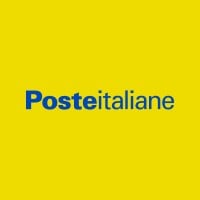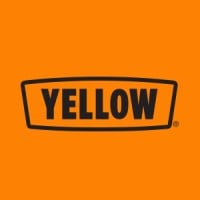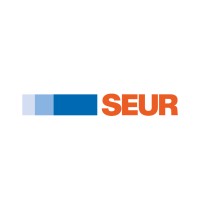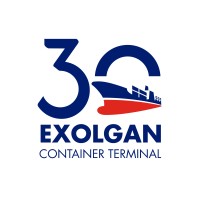
Poste Italiane Company Cyber Security Posture
posteitaliane.itWith our over 160-year history, approximately 120,000 employees and 12,800 post offices, total financial assets of €580 billion and 35 million customers, the Group occupies a unique position in terms of size, recognisability, reach and customer loyalty. Poste Italiane is Italy's largest service infrastructure and its services play an important role in society. We operate in three lines of business, in all of which we lead the market: Post and parcel sector, a business that has benefited from the rise of e-commerce and the dynamic nature of the parcels market; Financial Services, through BancoPosta; Insurance, where we lead the life market in Italy, and asset management, an area in which we are expanding. Our purpose: Grow responsibly thanks to the decisive contribution of its people to the sustainable success, innovation, digitisation and social cohesion of the country. Poste Italiane has issued shares listed on the Mercato Telematico Azionario (Electronic Stock Exchange - MTA) organised and managed by Borsa Italiana SpA as of 27 October 2015. At 31 December 2023, the Company is 29.26% owned by the Ministry of the Economy and Finance (MEF) and 35% owned by Cassa Depositi e Prestiti SpA (CDP), also controlled by the MEF. The remaining shares are held by institutional and retail investors. A total of 33.9%2 of the shares held by institutional investors of Poste Italiane SpA belong to investors who follow ESG (Environment, Social, Governance) criteria in their investment choices. Since May 2023, Silvia Maria Rovere is the Company’s Chairwoman. Since April 2017 Matteo Del Fante is Chief Executive Officer. Giuseppe Lasco was appointed General Manager in February 2024. More info https://www.posteitaliane.it/en/index.html (Last update March 2024)
Poste Italiane Company Details
poste-italiane
37013 employees
625813.0
484
Truck Transportation
posteitaliane.it
85
POS_3254951
In-progress
Between 900 and 1000
This score is AI-generated and less favored by cyber insurers, who prefer the TPRM score.
 Poste Italiane Global Score
Poste Italiane Global Score.png)

Poste Italiane Company Scoring based on AI Models
| Model Name | Date | Description | Current Score Difference | Score |
|---|---|---|---|---|
| AVERAGE-Industry | 03-12-2025 | This score represents the average cybersecurity rating of companies already scanned within the same industry. It provides a benchmark to compare an individual company's security posture against its industry peers. | N/A | Between 900 and 1000 |
Poste Italiane Company Cyber Security News & History
| Entity | Type | Severity | Impact | Seen | Url ID | Details | View |
|---|
Poste Italiane Company Subsidiaries

With our over 160-year history, approximately 120,000 employees and 12,800 post offices, total financial assets of €580 billion and 35 million customers, the Group occupies a unique position in terms of size, recognisability, reach and customer loyalty. Poste Italiane is Italy's largest service infrastructure and its services play an important role in society. We operate in three lines of business, in all of which we lead the market: Post and parcel sector, a business that has benefited from the rise of e-commerce and the dynamic nature of the parcels market; Financial Services, through BancoPosta; Insurance, where we lead the life market in Italy, and asset management, an area in which we are expanding. Our purpose: Grow responsibly thanks to the decisive contribution of its people to the sustainable success, innovation, digitisation and social cohesion of the country. Poste Italiane has issued shares listed on the Mercato Telematico Azionario (Electronic Stock Exchange - MTA) organised and managed by Borsa Italiana SpA as of 27 October 2015. At 31 December 2023, the Company is 29.26% owned by the Ministry of the Economy and Finance (MEF) and 35% owned by Cassa Depositi e Prestiti SpA (CDP), also controlled by the MEF. The remaining shares are held by institutional and retail investors. A total of 33.9%2 of the shares held by institutional investors of Poste Italiane SpA belong to investors who follow ESG (Environment, Social, Governance) criteria in their investment choices. Since May 2023, Silvia Maria Rovere is the Company’s Chairwoman. Since April 2017 Matteo Del Fante is Chief Executive Officer. Giuseppe Lasco was appointed General Manager in February 2024. More info https://www.posteitaliane.it/en/index.html (Last update March 2024)
Access Data Using Our API

Get company history
.png)
Poste Italiane Cyber Security News
Viminale: Poste Italiane and State Police strengthen cooperation for cybersecurity of public services
Viminale: Poste Italiane and State Police strengthen cooperation for cybersecurity of public services ... The Ministry of the Interior, Department ...
Andrea Rigoni
Andrea Rigoni is a nonresident senior fellow with the Transatlantic Security Initiative at the Atlantic Council's Scowcroft Center for Strategy and Security ...
E-commerce parcels at high altitude: on the routes of Poste Air Cargo
Logistics takes off: mail, parcels and e-commerce products are always delivered on time thanks to Poste Air Cargo, the Group's airline.
Poste Italiane studies Telecom Italia investment amid interest from rivals
Poste Italiane (PST.MI) is considering a potential investment in Telecom Italia (TLIT.MI) (TIM), two people with knowledge of the matter said.
Cyberattacks continue in Italy: NoName057 hits Quirinale, CSM and FdI websites
The hacker attacks against Italy, carried out by the pro-Russian group NoName057, represent a growing challenge to the country's cybersecurity.
Leading Experts To Convene at GITEX Africa to Fortify Digital Growth
Held in Marrakech from May 29-31, GITEX Africa is set to assemble a powerhouse of speakers primed to dissect the complex landscape of African cybersecurity.
"Smishing Triad" Targeted USPS and US Citizens for Data Theft
These scammers often attempt to disguise themselves as a government agency, bank, or other organization to lend legitimacy to their claims.
Poste's revenues at record levels, CEO Del Fante: "The numbers confirm the solidity of our business model"
The Board of Directors approved the financial results for the first quarter with a Net profit of 597 million.
Poste Italiane not promoting changes at the helm of Telecom Italia
Poste Italiane has no short term plans to request changes at the helm of Telecom Italia (TIM) after becoming the main investor in the ...

Poste Italiane Similar Companies

DSV - Global Transport and Logistics
At DSV, we keep supply chains flowing in a world of change. We provide and manage supply chain solutions for thousands of companies every day – from small family-run businesses to large global corporations. Our reach is global, yet our presence is local and close to our customers. Approx. 75,000 e

Penske Logistics
Penske Logistics is a Penske Transportation Solutions company headquartered in Reading, Pennsylvania. The company is a leading provider of innovative supply chain and logistics solutions. Penske offers solutions including dedicated transportation, distribution center management, lead logistics, frei

Yellow
Yellow, a Fortune 500 company headquartered in Nashville, TN is one of the largest super-regional less-than-truckload (LTL) companies in North America. Nearly 100 years ago, Yellow created the LTL industry, and now it comprises four successful regional LTL companies and an in-house logistics brokera

SEUR
SEUR, compañía pionera en el transporte urgente en España, lidera el sector con tres grandes ejes de negocio: internacional, comercio electrónico y envíos a temperatura controlada. En el último año hemos realizado más de 120 millones de envíos a nivel nacional, y como parte de Geopost, la r

Exolgan Container Terminal
EXOLGAN, es la mayor Terminal de Contenedores de la República Argentina. Ubicada en Dock Sud, Avellaneda, sobre un predio de 50 hectáreas y con 1.200 mts lineales de muelle, es el principal operador en el Comercio Exterior de la carga Containerizada que ingresa y egresa de nuestro País. El servic

Imperial
Imperial is an African focused provider of integrated market access and logistics solutions. With a focus on the following key industries - healthcare, consumer, automotive, chemicals, industrial and commodities - we take our clients’ and principals’ products to some of the fastest growing and most

Frequently Asked Questions
Explore insights on cybersecurity incidents, risk posture, and Rankiteo's assessments.
Poste Italiane CyberSecurity History Information
How many cyber incidents has Poste Italiane faced?
Total Incidents: According to Rankiteo, Poste Italiane has faced 0 incidents in the past.
What types of cybersecurity incidents have occurred at Poste Italiane?
Incident Types: The types of cybersecurity incidents that have occurred include .
Incident Details
What are the most common types of attacks the company has faced?
Additional Questions
What Do We Measure?
















Every week, Rankiteo analyzes billions of signals to give organizations a sharper, faster view of emerging risks. With deeper, more actionable intelligence at their fingertips, security teams can outpace threat actors, respond instantly to Zero-Day attacks, and dramatically shrink their risk exposure window.
These are some of the factors we use to calculate the overall score:
Identify exposed access points, detect misconfigured SSL certificates, and uncover vulnerabilities across the network infrastructure.
Gain visibility into the software components used within an organization to detect vulnerabilities, manage risk, and ensure supply chain security.
Monitor and manage all IT assets and their configurations to ensure accurate, real-time visibility across the company's technology environment.
Leverage real-time insights on active threats, malware campaigns, and emerging vulnerabilities to proactively defend against evolving cyberattacks.




